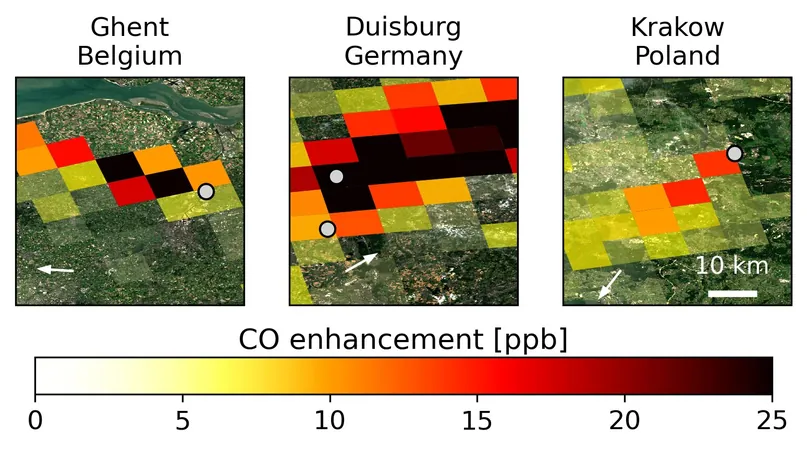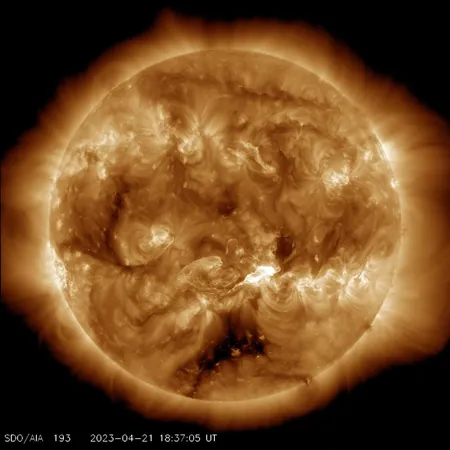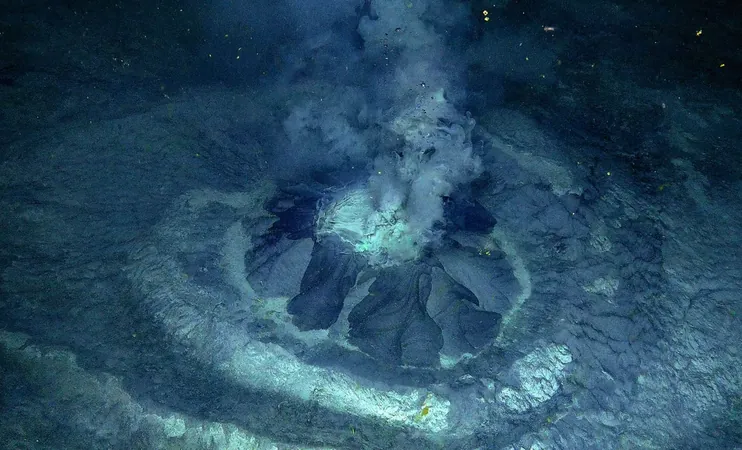
Groundbreaking Findings: Satellite-Based Monitoring Reveals Carbon Monoxide Emissions from Europe's Largest Steel Plants
2025-01-21
Author: Olivia
Introduction
In a pioneering study leveraging advanced satellite technology, Dutch researchers have successfully measured carbon monoxide (CO) emissions from the 21 largest steel plants across Europe for an entire year. Using the TROPOMI instrument aboard ESA's Sentinel-5P satellite, this groundbreaking work offers a new level of transparency and accountability for industrial emissions.
TROPOMI Satellite's Role
The TROPOMI satellite provides daily global maps of CO levels, thus setting a consistent standard for monitoring emissions. This is particularly relevant for industries like steel production, which stands as the largest contributor of CO emissions among industrial sectors. Interestingly, these plants are responsible for an astounding 77% of Europe's and 7% of the world's steel output.
Importance of Accurate Emissions Tracking
The significance of accurate emissions tracking cannot be overstated, especially as Europe and the world intensify their efforts to meet climate commitments, such as the Paris Agreement. Governments have long relied on self-reported emission data from corporations, which can vary greatly in methodology and transparency. However, the satellite-based approach grants policymakers access to reliable, independent measurements that can validate or challenge company reports. As Gijs Leguijt, the first author of the study from SRON/TNO, emphasized, "Measurements from space provide governments with new tools to estimate emissions from individual plants."
Implications for Future Research
This crucial research not only aids in regulatory compliance but also highlights the potential for future European space missions like CO2M and TANGO, which aim to monitor other significant greenhouse gases such as CO2. The integration of satellite data into climate regulations could revolutionize efforts to curb emissions and promote sustainability in the industrial sector.
Conclusion
As our planet grapples with the dire consequences of climate change, these findings underscore the need for innovative solutions to obtain accurate environmental data. In an era where corporations increasingly face scrutiny over their environmental impact, satellite technology offers an unprecedented opportunity for accountability—and could hold the key to a more sustainable industrial future.
Future Outlook
Stay tuned as we continue to explore advancements in satellite technology and their implications for environmental monitoring and climate action!









 Brasil (PT)
Brasil (PT)
 Canada (EN)
Canada (EN)
 Chile (ES)
Chile (ES)
 Česko (CS)
Česko (CS)
 대한민국 (KO)
대한민국 (KO)
 España (ES)
España (ES)
 France (FR)
France (FR)
 Hong Kong (EN)
Hong Kong (EN)
 Italia (IT)
Italia (IT)
 日本 (JA)
日本 (JA)
 Magyarország (HU)
Magyarország (HU)
 Norge (NO)
Norge (NO)
 Polska (PL)
Polska (PL)
 Schweiz (DE)
Schweiz (DE)
 Singapore (EN)
Singapore (EN)
 Sverige (SV)
Sverige (SV)
 Suomi (FI)
Suomi (FI)
 Türkiye (TR)
Türkiye (TR)
 الإمارات العربية المتحدة (AR)
الإمارات العربية المتحدة (AR)